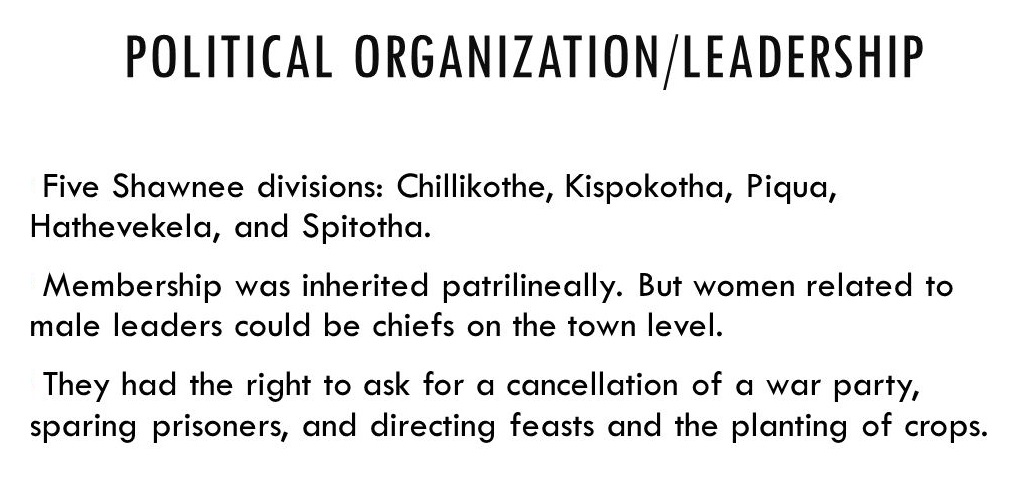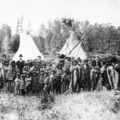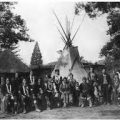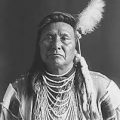
The Shawnee were a confederacy of five autonomous political units: Chillicothe (Chalahgawtha), Hathawekela (also spelled as Thawekila or Thawegila), Kispoko (Kispokotha), Mequachake (Mekoche or Maykujay), and Piqua (Pekowi). Each of these divisions had its own chiefs. Within the Shawnee, however, each of the five had specific responsibilities. The Chillicothe and Thawekila provided tribal leaders and took care of political concerns relating to the whole tribe. The Pekowis were responsible for matters relating to religion and ritual. The Mekochea were concerned with health and medicine and therefore provided healers and counselors. The Kispokos provided war leadership.
With regard to the possible origins of the division among the Shawnee, Colin Calloway, in his book The Shawnees and the War for America, reports: “The Shawnees traditionally comprised five divisions, though it is not certain whether these divisions originally constituted different tribes, which came together to form the Shawnees, or if they developed during their migrations.”
As with many other American Indian nations, the Shawnee had two kinds of chiefs: peace chiefs and war chiefs. The peace chiefs were responsible for domestic order. This was an office which could be inherited. Colin Calloway writes: “Civil chiefs tended to be mature men who had earned a reputation for good sense and whose counsel guided the people during times of peace and in everyday affairs.”
On the other hand, the war chief was an earned office. In the first step in becoming a war chief, a young man would have to participate in at least twelve raids into enemy territory. Then he would have to organize and lead four raids. To do this, he would have to persuade other young men to follow him. Just leading a war party, however, was not enough: the raids had to bring back honor and all of the men. According to Ian Steele, in an article in Ethnohistory: “A raid was considered successful only if the entire raiding party returned unhurt, and if it brought back at least one scalp or prisoner.”
Once a man had become a war chief, he would lead at least twelve successful raids. After leading 12 raids, a war chief was allowed to resign if he wished.
The Shawnee tribal council was composed of both peace chiefs and war chiefs. Charles Callender, in his entry on the Shawnee in the Handbook of North American Indians, reports: “Elderly men also attended or gave advice and assistance, besides providing information about earlier events and the decisions reached by past councils.”
During times of war, the civil chiefs would temporarily hand over leadership to younger men who were considered war chiefs who would lead war parties. However, war could not be declared unless the peace chiefs agreed. When peace returned, the war chiefs would give leadership back to the civil or peace chiefs.
The Shawnee also had two female chiefs: a peace chief who supervised the planting and prepared feasts of vegetable foods and a war chief who was responsible for the preparation of meat. The female peace chief had the power to stop a war party from leaving. When a war party returned with prisoners, the prisoners would be spared if they were touched by the female peace chiefs. However, if a female war chief touched the prisoners first, they were burned and ritually eaten.




Leave a Reply